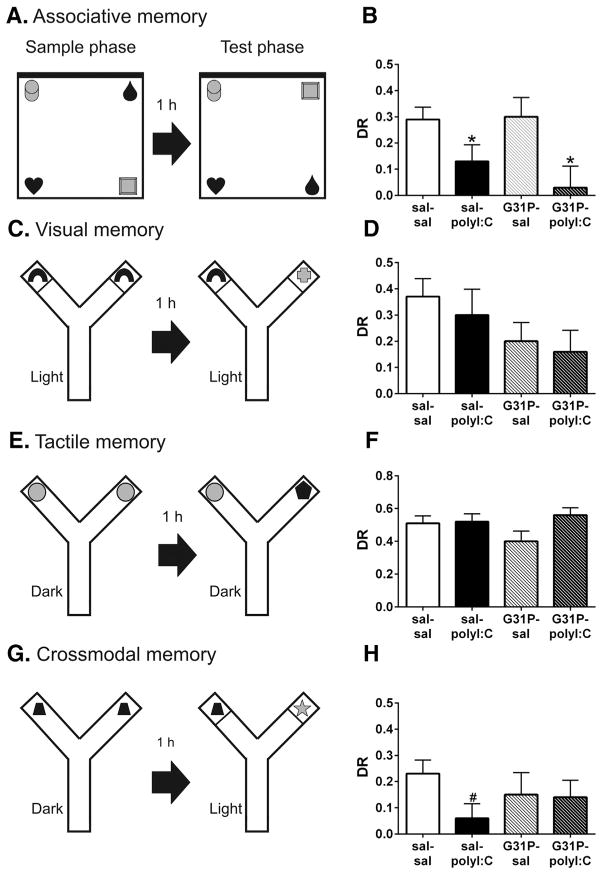Fig. 4.
Associative (A, B), visual (C, D), tactile (E, F), and crossmodal (G, H) recognition memory of the offspring following maternal polyI:C and G31P treatment. Schematics using an overhead view of each test are shown in panels A, C, E and G. A 1 h delay was used between the sample and test phases of all tests. Note that the black wall of the open field chamber in panel A is indicated with a thicker black line for the north wall. In panels C and G, thin lines in the maze arms depict transparent Plexiglas walls that prevent the rats from touching the objects. Discrimination ratios (DR) by group are depicted in panels B, D, F, H; note: the y-axis varies among these panels. B. Rats from the polyI:C groups had significantly decreased associative memory, as assayed by the object-in-place test (sal–sal, n = 19; sal–polyI:C, n = 17; G31P–sal, n = 15; G31P–polyI:C, n = 17). Rats in the sal–polyI:C group also had significantly lower crossmodal memory (H). Group sizes for D: sal–sal, n = 18; sal–polyI:C, n = 14; G31P–sal, n = 19; and G31P–polyI:C, n = 13. Group sizes for F: sal–sal, n = 22; sal–polyI:C, n = 20; G31P–sal, n = 19; and G31P–polyI:C, n = 21. Group sizes for H: sal–sal, n = 23; sal–polyI:C, n = 20; G31P–sal, n = 17; and G31P–polyI:C, n = 19. Number of litters included in B: sal–sal (n = 12), sal–polyI:C (n = 11), G31P–sal (n = 11), and G31P–polyI:C (n = 12). Number of litters included in D,F,H: sal–sal (n = –polyI:C ( 15), sal n = 11), G31P–sal (n = 11), and G31P–polyI:C (n = 10). * represents main effects, # represents simple main effects comparing sal–sal and sal–polyI:C rats.

